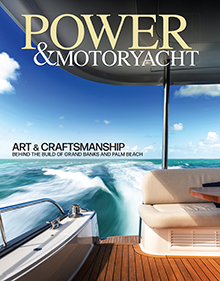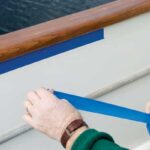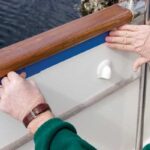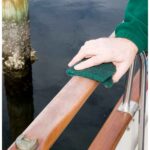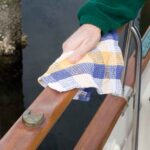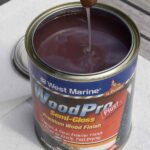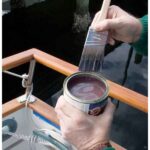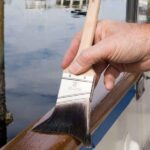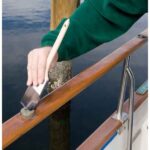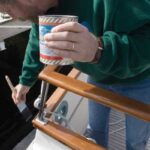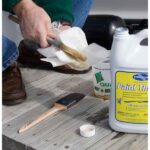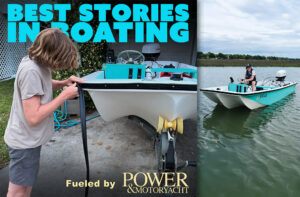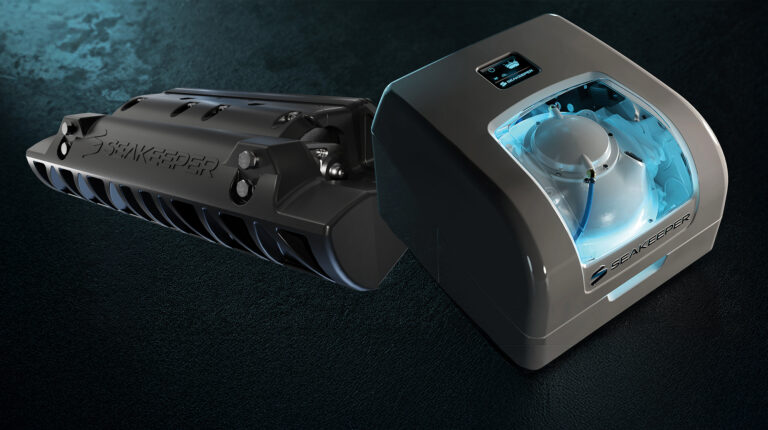Within a week or so, I stood in the paint section of my local chandlery examining a colorful selection of quart cans. Making a decision was tough. From what I could tell, the major manufacturers of glossy, semiclear, synthetic wood coatings—the term varnish was scrupulously avoided in most cases—were marketing products that seemed confusingly alike, in a couple of respects at least.
First, prices were roughly comparable. Cetol products were selling for about $32 per quart; Armada at approximately $27 per quart; and Rapidclear, Rapidcoat, and West Marine’s WoodPro Plus Semi-Gloss, all formulated by Epifanes, about $25 per quart.
Second, the basic chemistries seemed roughly comparable. Chinese tung oil, which gives old-school varnish its gloss and depth but also its dicey, inconsistent chemical and physical properties, had been replaced with synthetic materials engineered to be precisely and predictably effective. Moreover, synthetics had undergone numerous refinements since migrating from the log-home and deck-coating biz back in the ,80’s, with the periodic arrival of new blends on the marine scene having new percentages of UV-fighting iron-oxide and dispersing agents engendering variations in translucency and pigmentation. And these new blends were increasingly popular. When I telephoned Interlux product manager Brian Waple to do a little research on the Sikkens line, he told me that Interlux currently sells four times more synthetic Sikkens Cetol than all its conventional varnishes put together.
Funny how decisions ultimately get made, though. I ended up going with West Marine’s WoodPro Plus because I had no way of knowing exactly what type of material was already there—when I telephoned Betty Jane’s previous owner, he said he couldn’t remember what he’d used—and WoodPro was the only product that authorized application “over most existing finishes.” Sure, I could have removed all the varnish—“wooded ‘er down,” as the purists say—and started building up mil thickness from scratch with one of the other products, but hey, I’m a busy guy!

Minimal preparation. Minimal skill required. Minimal drying time between coats. And minimal work. What’s not to like?
Application day turned out to be a revelation, particularly in light of the varnishing hell I’d gone through during my Seabird era. I started out in the morning (temperature: approximately 63F) by washing all of Betty Jane’s teak with Dawn dish soap and fresh water, rinsing it off with pure water, then allowing everything to air dry. Then, once I’d done the necessary taping with Scotch Blue Multi-Surface painter’s tape, I roughed up all teak surfaces with a Scotch-Brite pad, wiped said surfaces off with a tack cloth, stirred my WoodPro with a flat stick, and at nine o’clock sharp, had my modestly priced, long-bristle synthetic brush at the ready.
This last part blew me away. Gone were the pesky, tough-to-deal with bubbles and brush marks that so complicate the application of conventional varnish; the synthetic stuff was easier to slather on than common house paint. It spread fast! And dried fast—in less than three hours, I’d brushed a fairly thick coat onto all my rails, nameboards, and trim strips, a job that likely would have taken all day had I used conventional varnish and varnishing techniques. And just four hours after completing the first coat, I laid on a second coat, with two more to follow the following day.
And that was it! I quit at four coats—to heck with the ten or 12 that typify the ordinary old-school varnishing job.
How does it look?
Quite frankly, from more than a few feet away, I can’t tell whether I’m eyeballing varnish or a synthetic. Of course, whether my friend Don’s eye (and attitude) will be as indulgent, I can’t really say at this point. It’s been almost six months now, and he still hasn’t stopped by to give my WoodPro (which continues to hold up quite nicely, thank you very much) the proverbial white-glove inspection.
Do I perhaps detect a whiff of stubbornness here?
This article originally appeared in the April 2007 issue of Power & Motoryacht magazine.

